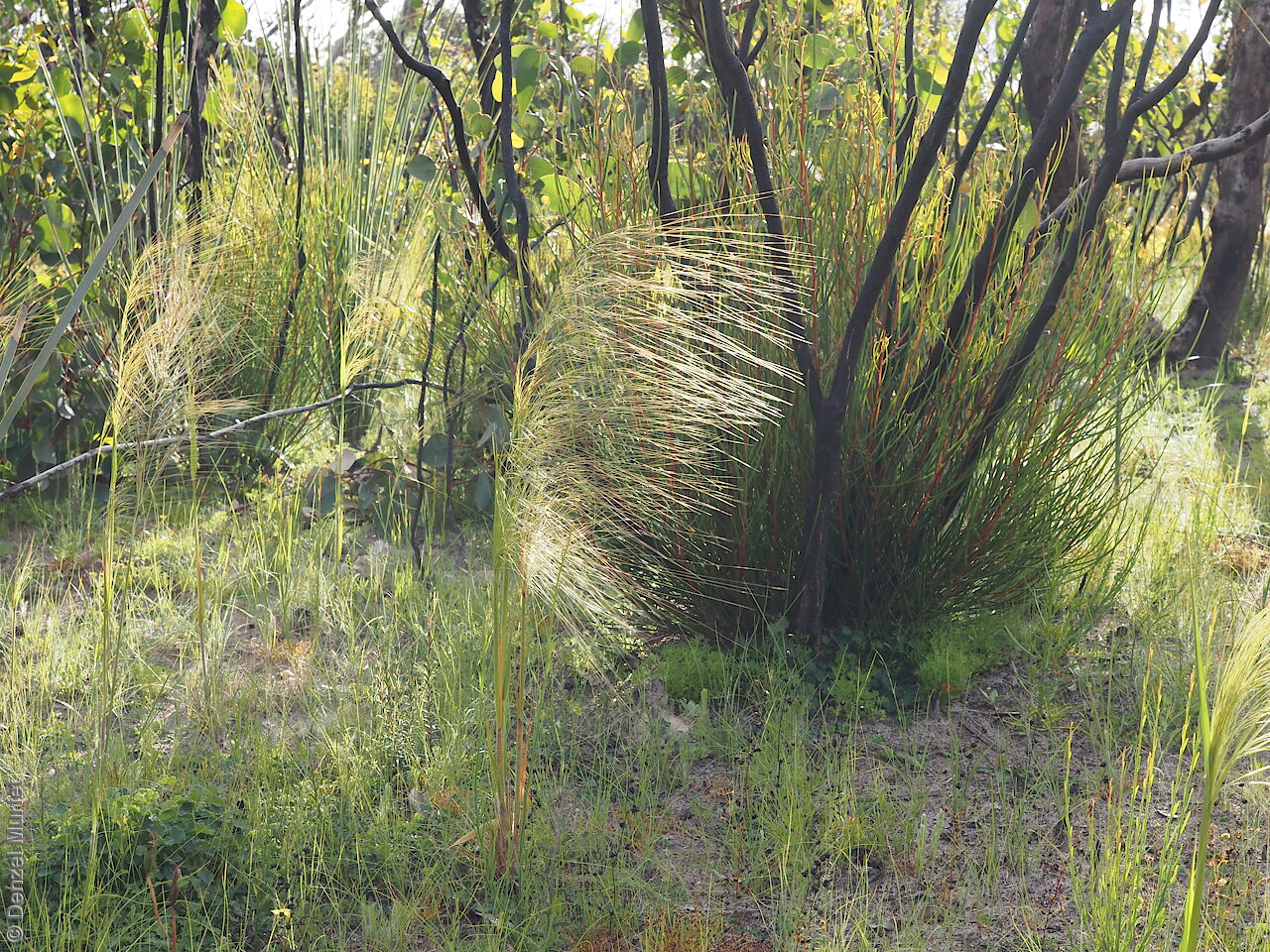




















Botanical art
Prior names
Stipa scelerata
Stipa lachnocolea
Stipa setacea var. latifolia
Stipa compressa var. lachnocolea
Stipa macalpinei
Common names
One-year Grass
Annual Spear-grass
Etymology
Austrostipa from the Latin 'auster' meaning south and the genus Stipa, referring to the genus being allied to Stipa but restricted to Australia. Macalpinei name after Daniel McAlpine (1849-1932), a Scottish born Australian government vegetable pathologist and author of Plant Diseases in Australia.
Distribution and status
Found on the Eyre Peninsula, Kangaroo Island, southern Mount Lofty Ranges and the South-east in South Australia growing on sand and limestone in heathland, mallee and heathy woodlands. Also found in Western Australia and Victoria. Native. Uncommon in South Australia. Rare in Victoria. Common in Western Australia.
Herbarium regions: Eyre Peninsula, Southern Lofty, Kangaroo Island, South Eastern, Green Adelaide
AVH map: SA distribution map (external link)
Plant description
Tufted perennial but often acts as an annual grass, appearing after fires; to 90 cm high, with erect unbranched culms with glabrous nodes, usually hidden by the sheaths. Leaf-blades flat to inrolled, to 20 cm long an 9 mm broad, pubescent; sheaths with dense hollow shining transparent flexuose hairs. Inflorescence a contracted dense panicle to 45 cm long, the base of the panicle often concealed by uppermost leaf-sheath; awns v long to 20cm; glumes to 23 mm long; light green, sometimes toothed just below apex, the lower up to 12 mm longer than upper. Flowering between October and January.
Key to this species: awn falcate (curved bristle at right angle to the column); lemma narrow and needle-like;, awn very long and straight 100-200 mm; sheaths with dense hollow shining transparent flexuose hairs; annual fire species. Fruits are straw-coloured linear-elliptic lemma to 8 mm long, with a smooth surface and covered in long white-straw coloured hairs; callus long to 3.5 mm; awn very long straight to 200 mm long. Seeds are yellow-brown narrow-ellipsoid grain to 3 mm long within the lemma. Seed embryo type is lateral.
Seed collection and propagation
Collect seeds between December and February. Use your hands to gently strip the seeds (lemma) off the mature fruiting spike, those that are turning a straw colour. Mature seeds will come off easily compare to the immature seeds that remain on the spike. Alternatively, you can break off the whole fruit spike to allow some of the seeds to mature further. Place the seeds/spike in a tray and leave to dry for two weeks. No further cleaning is required if only seed collected. If seed spikes collected, use hand to strip off the mature seeds. Store the seeds with a desiccant such as dried silica beads or dry rice, in an air tight container in a cool and dry place. Viability of grass seeds could be very viable, depending on time of seed collections and seasonal conditions.
| Location | No. of seeds (weight grams) | Number of plants | Date collected | Collection number Collection location | Date stored | % Viability | Storage temperature |
|---|---|---|---|---|---|---|---|
| BGA | 2,100 (11.370 g) | 20+ | 30-Oct-2019 | Carrapee Hill Eyre Peninsula | 7-Jul-2022 | 70% | -18°C |
Number of plants: This is the number of plants from which the seeds were collected.
Collection location: The Herbarium of South Australia's region name.
% Viability: Percentage of filled healthy seeds determined by a cut test or x-ray.